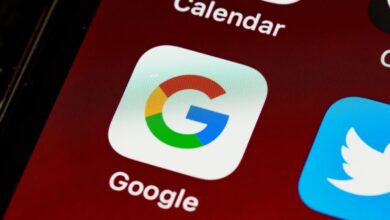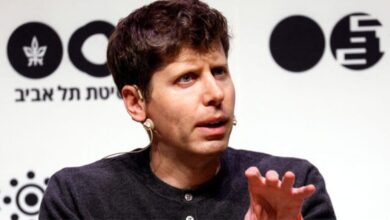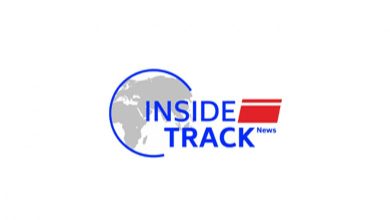What happened to Napster? The story of an early pioneer in digital music streaming

Remember Napster, the OG online network that let people download music tracks for free? The now-forgotten platform was sold to 3D technology company Infinite Reality for $207 million earlier this week.The US-based tech startup wants to turn Napster into a music metaverse. As part of its vision, the company aims to create virtual 3D spaces where fans can enjoy music concerts or lening parties together and allow musicians or labels to sell both physical and virtual merchandise. Arts will also receive a wider range of metrics and analytics to better understand user behaviour on the platform.
In its new avatar, Napster will be similar to the metaverse concept behind the hit game Fortnite and the immersive online platform Roblox.
Story continues below this ad
“The internet has evolved from desktop to mobile, from mobile to social, and now we are entering the immersive era. Yet, music streaming has remained largely the same. It’s time to reimagine what’s possible,” said Jon Vlassopulos, CEO, Napster, in a blog post.
Ease of Napster
For those who grew up in the late’90s, Napster paved the way for digital downloads and music streaming services. Originally launched as a peer-to-peer file-sharing service in 1999, Napster had 20 million users in 2000, and at its peak, the service was estimated to have around 80 million users.
Napster was hugely popular in its time because it allowed users to quickly and easily find music from every genre in MP3 format, ripped from analog cassette tapes, vinyl records, and CDs. In fact, many users swapped MP3 files, which could be played in media players like Winamp, and built collections of popular digital music for free — fuelling its soaring popularity in the late ’90s.
Founded in 1999 Shawn Fanning and Sean Parker, the pioneer music sharing service shot to fame due to illegal dribution of audio files and MP3s across the internet before being shut down in 2001 for violating copyright infringement laws. (Image credit: Napster)
Shawn Fanning and Sean Parker, both passionate about coding and software, were the driving force behind Napster. Their vision of making music more accessible to the masses challenged traditional music dribution methods — something unheard of at the time.Story continues below this ad
When downloaded and running on a personal computer, the Napster software allowed users to search through millions of MP3 song files on other people’s PCs that also had the software. Users could download songs directly from each other’s computers, which was essentially the core function of Napster.
Facing the music
As Napster gained in popularity, it caught the attention of the Recording Industry Association of America (RIAA), which represents the interests of music labels and arts. The service faced criticism due to its lack of control over the transfer of copyrighted material across its network.
But things started to go downhill for Napster when the American heavy metal band Metallica filed a lawsuit against the platform, accusing it of copyright infringement. The band claimed their music was being shared illegally, hitting the revenue. In fact, the band went to the extent that it had identified over 300,000 users who they alleged had illegally shared their music and demanded that their accounts be blocked. The case ended in a settlement, but it was a turning point for the entire music industry.
The lawsuit broke Napster, and RIAA also went after the music service. After a long legal battle, Napster shut down its network in July 2001. The service was shuttered, and the following year, the company filed for bankruptcy. But the service was still alive.Story continues below this ad
Trying a new tune
After agreeing to compensate music creators and copyright holders for the unauthorised use of their music, Napster attempted a comeback introducing a paid subscription model. However, it was too late, and the platform never regained its former popularity.
that time, its user base had shrunk significantly, and in May 2002, the company announced the sale of the platform to Bertelsmann, a German media corporation. After acquiring Napster, Bertelsmann attempted to relaunch it as an online music subscription service. However, in September 2002, American courts blocked the sale, forcing Napster into liquidation.
Despite a turbulent past, Roxio, a digital media company, went ahead and purchased Napster’s technology portfolio, brand name, and trademarks after bidding $5.3 million in cash at a bankruptcy auction. Now that Napster’s core technology was in the hands of Roxio, in 2003, the company purchased PressPlay, an online music service launched Universal Music Group and Sony Corporation in 2001, to combat illegal file-sharing. Roxio then rebranded the PressPlay music store as ‘Napster 2.0’, a move it thought would bring users back to the service.
Early mover in digital music streaming
However, in 2005, Napster tried something completely new—a portable subscription-based service that allowed users to legally download an unlimited number of songs to their MP3 players for a monthly fee. Called “Napster-to-Go,” it was a novel concept for most people. At the time, purchasing music was expensive, but Napster’s approach was different on many levels—a risky bet.Story continues below this ad
The subscription model challenged pay-per-download programs like Apple’s popular iTunes, where users had to buy each individual song or an entire album. Napster heavily marketed the service, running a $30 million campaign that debuted during the Super Bowl. The high-profile advertisement took direct shots at Apple’s iTunes service, which was limited to the iPod, while Napster-to-Go’s compatibility with MP3 players from Creative Technology Ltd., Dell Inc., and Reigncom Ltd.’s iRiver made it seem superior.
Yet, the service ultimately failed, as consumers didn’t embrace the idea of streaming music through a paid subscription.
Still, looking back at what Napster attempted, it was nothing short of revolutionary—the beginning of the music streaming era.
Over the years, Napster has undergone several brand changes, with many attempts to revive the music service. Meanwhile, the digital music landscape evolved, transforming how music was legally dributed. Apple made a breakthrough with its iTunes Store, which charged consumers for individual tracks and albums. Later, digital downloads gave way to music streaming services, and apps like Spotify, Deezer, and Pandora became the default way for people to consume and len to music on their smartphones.Story continues below this ad
In 2008, Best Buy, a major US electronics retailer, acquired Napster in a deal valued at $121 million. However, three years later, Rhapsody, a streaming music service, acquired Napster from Best Buy, merging the platform with its own streaming service.
Napster is now in the hands of a new owner, Infinite Reality. (Image credit: Infinite Reality)
New marching orders
For many years, the Napster brand was almost nonexent in the US, but the service continued to operate in other major markets, such as the UK and Germany. However, in 2013, Rhapsody expanded the Napster-branded service to more countries, signalling a potential comeback for the once-popular platform.
Since 2016, Napster has operated as a music streaming service offering on-demand access to licensed tracks, currently priced at $11 per month. Following a revamp and global expansion, Napster was sold again in 2020, with virtual reality concert promoter MelodyVR acquiring the service. However, the change in ownership was short-lived, and just two years later, MelodyVR sold Napster to an investment consortium led Hivemind and cryptocurrency protocol Algorand.
Napster still exs today, and its library has grown to 110 million songs, with licenses to stream millions of tracks. This may be why Infinite Reality, its new owner, decided to acquire Napster.Story continues below this ad
Having access to a vast cataloge of licensed music will help Infinite Reality add more social features, digital merchandise, and shopping options, allowing the service to transition into a new type of platform for the next generation.







